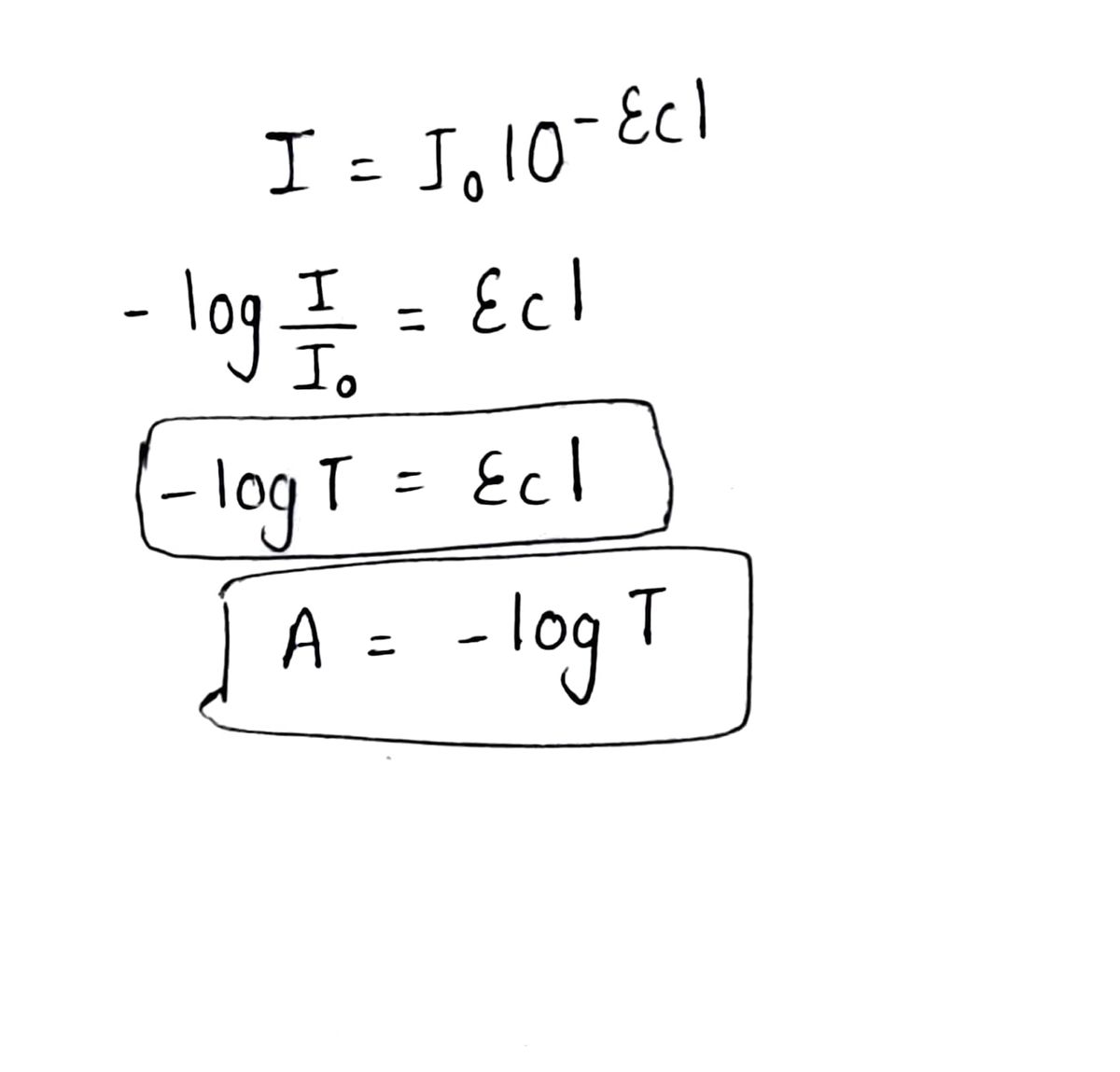What absorbance value corresponds to 40.2% T? A = A 0.0130 M solution of a certain analyte exhibits 40.2% T at a wavelength of 280 nm. What will the percent transmittance be for a 0.0255 M solution of the same analyte? Assume the pathlengths for each measurement are equal. %T = %
What absorbance value corresponds to 40.2% T? A = A 0.0130 M solution of a certain analyte exhibits 40.2% T at a wavelength of 280 nm. What will the percent transmittance be for a 0.0255 M solution of the same analyte? Assume the pathlengths for each measurement are equal. %T = %
Chemistry
10th Edition
ISBN:9781305957404
Author:Steven S. Zumdahl, Susan A. Zumdahl, Donald J. DeCoste
Publisher:Steven S. Zumdahl, Susan A. Zumdahl, Donald J. DeCoste
Chapter1: Chemical Foundations
Section: Chapter Questions
Problem 1RQ: Define and explain the differences between the following terms. a. law and theory b. theory and...
Related questions
Question
![### Transcription for Educational Website
**Problem Statement:**
What absorbance value corresponds to 40.2% transmittance (T)?
\[ A = \_\_\_\_ \]
**Further Inquiry:**
A 0.0130 M solution of a certain analyte exhibits 40.2% T at a wavelength of 280 nm. What will the percent transmittance be for a 0.0255 M solution of the same analyte? Assume the pathlengths for each measurement are equal.
\[ \%T = \_\_\_\_ \% \]
**Instructions:**
Calculate the absorbance using the formula:
\[ A = -\log_{10}(T/100) \]
Then, determine the percent transmittance for the 0.0255 M solution by applying Beer-Lambert law, assuming constant pathlength. Describe the methodological steps and calculations clearly.](/v2/_next/image?url=https%3A%2F%2Fcontent.bartleby.com%2Fqna-images%2Fquestion%2F2f591c64-216a-4120-ac44-1b23dfa641af%2F5eb60699-ae9e-4e97-ab2d-ec3e712e38f1%2Fjcnm02k_processed.jpeg&w=3840&q=75)
Transcribed Image Text:### Transcription for Educational Website
**Problem Statement:**
What absorbance value corresponds to 40.2% transmittance (T)?
\[ A = \_\_\_\_ \]
**Further Inquiry:**
A 0.0130 M solution of a certain analyte exhibits 40.2% T at a wavelength of 280 nm. What will the percent transmittance be for a 0.0255 M solution of the same analyte? Assume the pathlengths for each measurement are equal.
\[ \%T = \_\_\_\_ \% \]
**Instructions:**
Calculate the absorbance using the formula:
\[ A = -\log_{10}(T/100) \]
Then, determine the percent transmittance for the 0.0255 M solution by applying Beer-Lambert law, assuming constant pathlength. Describe the methodological steps and calculations clearly.
Expert Solution
Step 1 Formula

Step by step
Solved in 2 steps with 2 images

Knowledge Booster
Learn more about
Need a deep-dive on the concept behind this application? Look no further. Learn more about this topic, chemistry and related others by exploring similar questions and additional content below.Recommended textbooks for you

Chemistry
Chemistry
ISBN:
9781305957404
Author:
Steven S. Zumdahl, Susan A. Zumdahl, Donald J. DeCoste
Publisher:
Cengage Learning

Chemistry
Chemistry
ISBN:
9781259911156
Author:
Raymond Chang Dr., Jason Overby Professor
Publisher:
McGraw-Hill Education

Principles of Instrumental Analysis
Chemistry
ISBN:
9781305577213
Author:
Douglas A. Skoog, F. James Holler, Stanley R. Crouch
Publisher:
Cengage Learning

Chemistry
Chemistry
ISBN:
9781305957404
Author:
Steven S. Zumdahl, Susan A. Zumdahl, Donald J. DeCoste
Publisher:
Cengage Learning

Chemistry
Chemistry
ISBN:
9781259911156
Author:
Raymond Chang Dr., Jason Overby Professor
Publisher:
McGraw-Hill Education

Principles of Instrumental Analysis
Chemistry
ISBN:
9781305577213
Author:
Douglas A. Skoog, F. James Holler, Stanley R. Crouch
Publisher:
Cengage Learning

Organic Chemistry
Chemistry
ISBN:
9780078021558
Author:
Janice Gorzynski Smith Dr.
Publisher:
McGraw-Hill Education

Chemistry: Principles and Reactions
Chemistry
ISBN:
9781305079373
Author:
William L. Masterton, Cecile N. Hurley
Publisher:
Cengage Learning

Elementary Principles of Chemical Processes, Bind…
Chemistry
ISBN:
9781118431221
Author:
Richard M. Felder, Ronald W. Rousseau, Lisa G. Bullard
Publisher:
WILEY